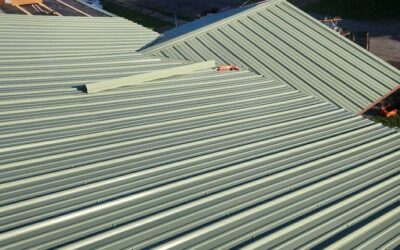What’s The Difference Between 20, 30, 40, & 50-Year Shingles?
When selecting roofing shingles, homeowners often encounter different lifespan options such as 20, 30, 40, or even 50-year shingles. But what do these numbers mean, and how do they impact your decision? Let’s explore the differences in thickness, durability, materials, aesthetic appeal, property value, and cost to help you make an informed choice.
The Different Types of Asphalt Shingles
Asphalt shingles are the most common roofing material in the United States, known for their affordability and reliability. There are three main types:
- 3-Tab Shingles – The most basic and affordable option, typically rated for 20 to 25 years.
- Architectural Shingles – Also known as dimensional shingles, these offer greater durability and a more premium look, often rated for 30 to 50 years.
- Luxury Shingles – The highest quality asphalt shingles, designed to mimic slate or wood shakes, with the longest lifespan and premium pricing.
Thickness
Shingle thickness directly impacts durability and longevity.
- 20-year shingles are the thinnest, typically 3-tab style.
- 30-year shingles are thicker and often architectural, providing better wind resistance.
- 40 and 50-year shingles are even more robust, featuring multiple layers that enhance durability and curb appeal.
Durability
The durability of shingles depends on factors like thickness, material composition, and weather resistance.
- 20-year shingles are more susceptible to wind and impact damage.
- 30-year shingles offer improved wind resistance (often up to 130 mph) and better granule retention.
- 40 and 50-year shingles are highly durable, with superior impact resistance and longevity.
Materials
Asphalt shingles are made from a fiberglass or organic mat base, coated with asphalt and granules for weather resistance. Higher-rated shingles typically have better-quality asphalt, more layers, and advanced coatings that resist algae and UV damage.
Aesthetic Appeal
Higher-rated shingles often feature richer colors, deeper dimensions, and a more sophisticated appearance. Architectural and luxury shingles enhance curb appeal and provide a premium look compared to standard 3-tab options.
Property Value
A longer-lasting roof can increase home value and appeal to potential buyers. Architectural and luxury shingles, in particular, can make a home more attractive in competitive real estate markets.
Cost
Price varies depending on quality, brand, and installation factors.
- 20-year shingles: Most affordable, but with shorter lifespan and minimal aesthetic appeal.
- 30-year shingles: Moderate cost, balancing affordability and durability.
- 40 and 50-year shingles: Higher initial investment but lower long-term replacement costs.
Will a 50-Year Roof Really Last 50 Years?
While 50-year shingles are designed for longevity, actual lifespan depends on climate, maintenance, and installation quality. Many factors, such as severe weather, improper ventilation, and lack of maintenance, can shorten their lifespan.
What About the Warranty?
Manufacturers often provide warranties, but terms vary:
- 20-year shingles: Basic warranties covering defects but limited on workmanship.
- 30 to 50-year shingles: Enhanced warranties, sometimes including prorated coverage and extended protection if installed by certified contractors.
Conclusion
Choosing between 20, 30, 40, and 50-year shingles depends on budget, aesthetic preference, durability needs, and long-term investment goals. While 50-year shingles offer the best longevity and protection, 30-year architectural shingles are a great middle-ground option for many homeowners. To ensure the best performance, always work with a trusted roofing contractor, like S&K Construction and Remodeling LLC, to install and maintain your roof properly.
 (440) 307-2060
(440) 307-2060

